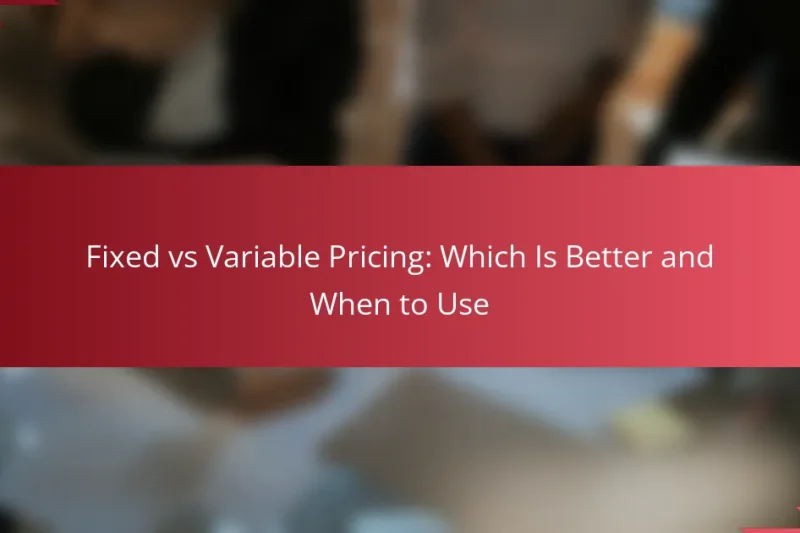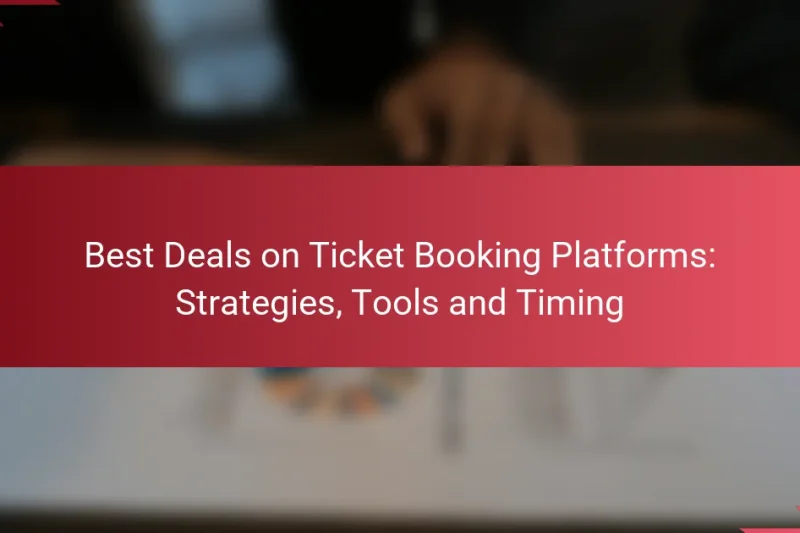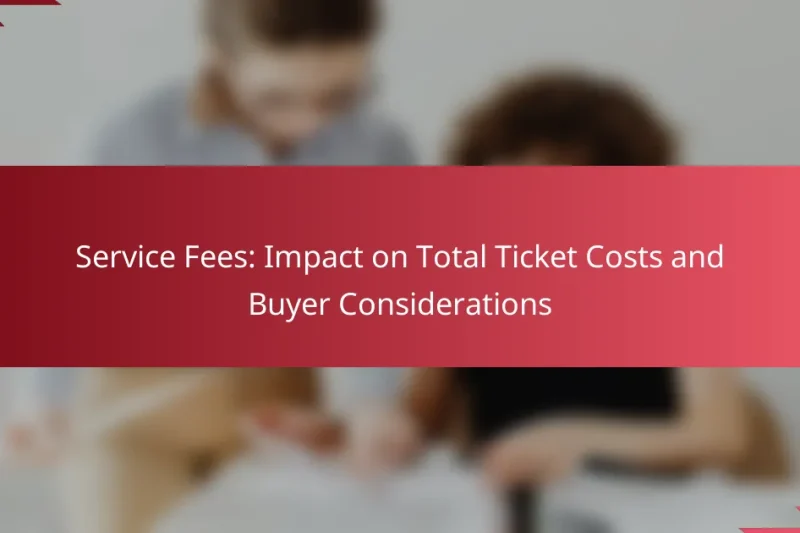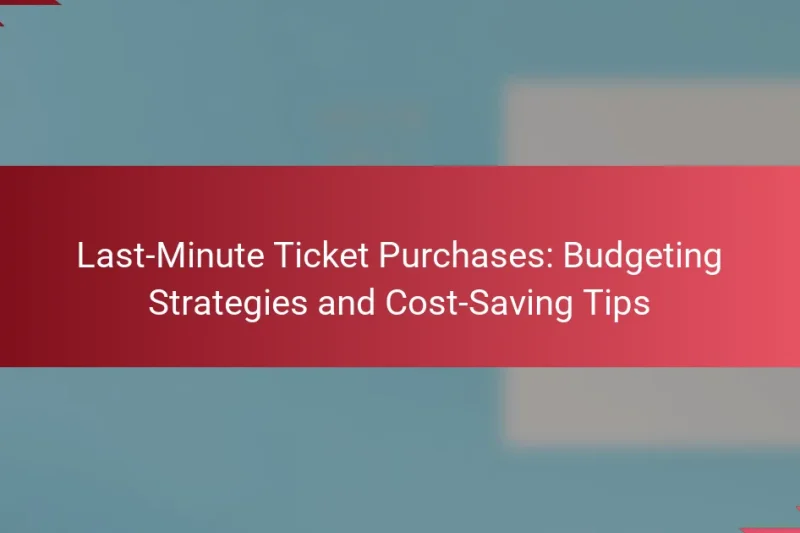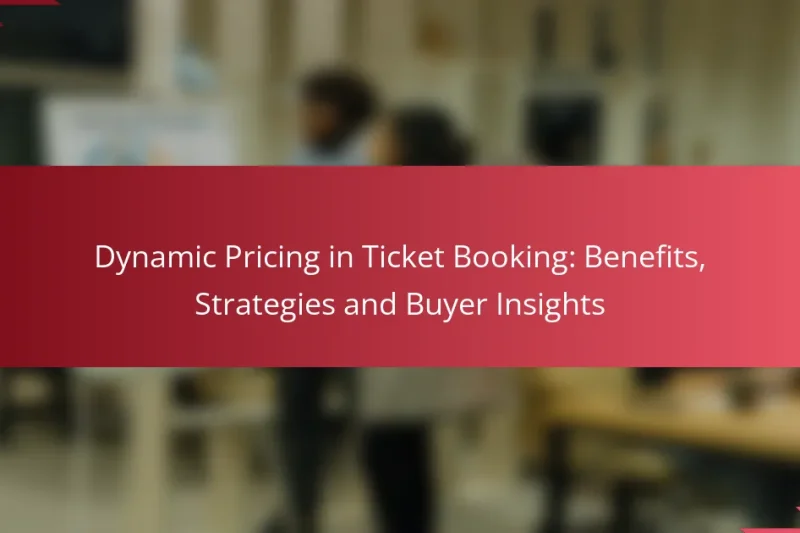Understanding the differences between fixed and variable pricing is crucial for businesses aiming to optimize their … Fixed vs Variable Pricing: Which Is Better and When to UseRead more
Pricing Models for Ticket Booking
Pricing models for ticket booking play a crucial role in maximizing revenue and meeting customer needs. Key models such as dynamic, fixed, tiered, subscription, and freemium pricing each offer unique advantages tailored to various market demands. By understanding these models and the factors influencing ticket prices, consumers can make more informed purchasing decisions.
Best Deals on Ticket Booking Platforms: Strategies, Tools and Timing
Finding the best deals on ticket booking platforms requires a strategic approach that leverages various tools … Best Deals on Ticket Booking Platforms: Strategies, Tools and TimingRead more
Service Fees: Impact on Total Ticket Costs and Buyer Considerations
Service fees can considerably inflate the total cost of tickets in the US, often adding a … Service Fees: Impact on Total Ticket Costs and Buyer ConsiderationsRead more
Last-Minute Ticket Purchases: Budgeting Strategies and Cost-Saving Tips
Last-minute ticket purchases can be both exciting and financially challenging, but with the right budgeting strategies … Last-Minute Ticket Purchases: Budgeting Strategies and Cost-Saving TipsRead more
Dynamic Pricing in Ticket Booking: Benefits, Strategies and Buyer Insights
Dynamic pricing in ticket booking is a strategy that enables companies to adjust prices in response … Dynamic Pricing in Ticket Booking: Benefits, Strategies and Buyer InsightsRead more
What are the best pricing models for ticket booking?
The best pricing models for ticket booking include dynamic, fixed, tiered, subscription, and freemium pricing. Each model has its own advantages and considerations, catering to different market demands and customer preferences.
Dynamic pricing
Dynamic pricing adjusts ticket prices based on real-time demand, competition, and other market factors. This model can maximize revenue by raising prices during peak times and lowering them during off-peak periods.
For example, airlines often use dynamic pricing, where a ticket’s cost can fluctuate significantly within a short time frame. Customers should be aware that prices may change frequently, so booking early can sometimes lead to better deals.
Fixed pricing
Fixed pricing offers tickets at a set price, regardless of demand fluctuations. This model provides clarity for customers, as they know the exact amount they will pay at the time of purchase.
Fixed pricing is common for events with a stable audience, such as theater performances or concerts. However, it may limit revenue potential during high-demand periods, as prices do not adjust to market conditions.
Tiered pricing
Tiered pricing involves offering tickets at different price levels based on features or seating options. This model allows customers to choose based on their budget and preferences, often leading to increased sales.
For instance, a concert might offer general admission, VIP, and front-row seats at varying prices. This approach can cater to a broader audience while maximizing revenue from premium offerings.
Subscription pricing
Subscription pricing allows customers to pay a recurring fee for access to tickets over a specified period. This model can enhance customer loyalty and provide a steady revenue stream for ticket sellers.
For example, some theaters offer monthly subscriptions that allow patrons to attend multiple shows for a flat fee. This model works well for regular attendees but may not be suitable for one-time event goers.
Freemium pricing
Freemium pricing offers basic access to tickets for free while charging for premium features or services. This model can attract a large user base, with the potential to convert free users into paying customers.
For example, a ticketing platform might allow users to browse events and receive notifications for free but charge for early access to tickets or exclusive deals. This approach can effectively build a community around the service.
How does dynamic pricing work in ticket booking?
Dynamic pricing in ticket booking adjusts ticket prices based on real-time market conditions, demand, and competitor pricing. This model allows sellers to optimize revenue by increasing prices when demand is high and lowering them when demand is low.
Real-time adjustments
Real-time adjustments in dynamic pricing involve continuously monitoring ticket sales and market trends. For instance, if a concert is nearing sell-out, prices may rise sharply within hours or even minutes. This approach helps maximize revenue by capitalizing on last-minute demand.
To implement real-time adjustments effectively, ticket sellers often use algorithms that analyze sales data and customer behavior. This ensures that prices reflect current market conditions and consumer willingness to pay.
Market demand analysis
Market demand analysis is crucial for understanding how many tickets will sell at various price points. Sellers analyze historical data, current trends, and external factors like holidays or local events to forecast demand. For example, a major sporting event may see increased demand due to local interest and media coverage.
By assessing demand, ticket sellers can set initial prices and adjust them as needed. Tools like predictive analytics can provide insights into potential sales, helping to inform pricing strategies and maximize profits.
Competitor pricing strategies
Competitor pricing strategies play a significant role in dynamic pricing. Sellers must keep an eye on how similar events are priced to remain competitive. If a rival lowers their prices, it may prompt a similar response to avoid losing potential customers.
Understanding competitor pricing can involve regular monitoring of ticket platforms and using pricing intelligence tools. This helps sellers to not only match prices but also to differentiate their offerings through value-added services or exclusive deals.
What factors influence ticket pricing?
Several key factors influence ticket pricing, including the popularity of the event, seating location, timing of the purchase, and seasonal trends. Understanding these elements can help consumers make informed decisions when booking tickets.
Event popularity
The popularity of an event significantly impacts ticket prices. High-demand events, such as major concerts or championship games, often see prices soar, sometimes doubling or tripling compared to less popular events. Fans should be prepared to pay a premium for tickets to see top artists or teams.
To gauge popularity, consider checking social media buzz, ticket sales data, or historical attendance figures. Popular events may sell out quickly, so acting fast can be crucial to securing a ticket at a reasonable price.
Seating location
Seating location plays a critical role in ticket pricing. Seats closer to the stage or field typically command higher prices due to their desirability. For example, front-row seats at a concert can cost several hundred dollars more than seats in the back.
When booking, compare prices across different sections. Some venues offer a range of seating options, allowing you to find a balance between cost and view quality. Consider whether you prefer a better view or a more budget-friendly option.
Time of purchase
The timing of your ticket purchase can greatly affect the price. Tickets are often cheaper when first released, with prices increasing as the event date approaches. Last-minute purchases can sometimes yield discounts, but this is risky as popular events may sell out.
To maximize savings, monitor ticket release dates and set alerts for price drops. Purchasing tickets well in advance or during promotional sales can lead to significant savings.
Seasonality
Seasonality can influence ticket prices, especially for events tied to specific times of the year. For instance, holiday concerts or summer festivals may see higher prices during peak seasons. Conversely, off-peak events may offer lower prices to attract attendees.
Be aware of seasonal trends in your area. Planning your attendance during less busy times can help you find better deals. Additionally, consider attending events during weekdays rather than weekends for potential savings.
How to choose the right pricing model for your event?
Choosing the right pricing model for your event involves understanding your audience, analyzing competitor strategies, and evaluating the type of event you are hosting. A well-selected model can maximize attendance and revenue while ensuring a positive experience for attendees.
Understand your audience
To effectively choose a pricing model, start by identifying your target audience’s preferences and willingness to pay. Consider factors such as demographics, spending habits, and past attendance at similar events.
Surveys or focus groups can provide valuable insights into what pricing structures resonate with your audience. For example, younger attendees may prefer lower ticket prices or flexible payment options, while corporate clients might be willing to pay a premium for exclusive access.
Analyze competitor strategies
Researching how competitors price their events can inform your own pricing decisions. Look at similar events in your area and note their ticket prices, discounts, and any value-added offerings.
Consider adopting a competitive pricing strategy, which may involve setting your prices slightly lower than competitors to attract more attendees, or offering unique features that justify a higher price point. Keep an eye on seasonal trends and promotional tactics that competitors use to boost sales.
Evaluate event type
The type of event you are hosting plays a crucial role in determining the most suitable pricing model. For example, conferences may benefit from tiered pricing based on registration dates, while concerts might use dynamic pricing based on demand.
Consider the overall experience you want to create. If your event includes high-profile speakers or exclusive activities, a premium pricing model may be appropriate. Conversely, community events might require more accessible pricing to encourage participation.
What are the advantages of tiered pricing?
Tiered pricing offers several advantages, including increased revenue potential and improved customer segmentation. By providing different price levels, businesses can cater to various customer needs and willingness to pay, maximizing overall sales.
Increased Revenue Potential
Tiered pricing can significantly boost revenue by appealing to a broader audience. For instance, offering basic, standard, and premium ticket options allows customers to choose based on their budget and preferences. This strategy can lead to higher average transaction values as customers may opt for more expensive tiers if they perceive added value.
Improved Customer Segmentation
With tiered pricing, businesses can effectively segment their customer base. Different tiers can target various demographics, such as budget-conscious consumers versus those seeking luxury experiences. This segmentation helps tailor marketing strategies and enhances customer satisfaction by providing options that meet diverse needs.
Enhanced Perceived Value
Offering multiple pricing tiers can enhance the perceived value of a product or service. Customers often associate higher prices with better quality, so presenting a premium option can elevate the overall brand image. This perception can lead to increased customer loyalty and repeat purchases.
Flexibility in Promotions
Tiered pricing allows for greater flexibility in promotional strategies. Businesses can run targeted campaigns for specific tiers, such as discounts on lower-priced tickets to attract more customers or exclusive offers for premium tiers to reward loyal clients. This adaptability can help optimize sales during peak seasons or special events.
